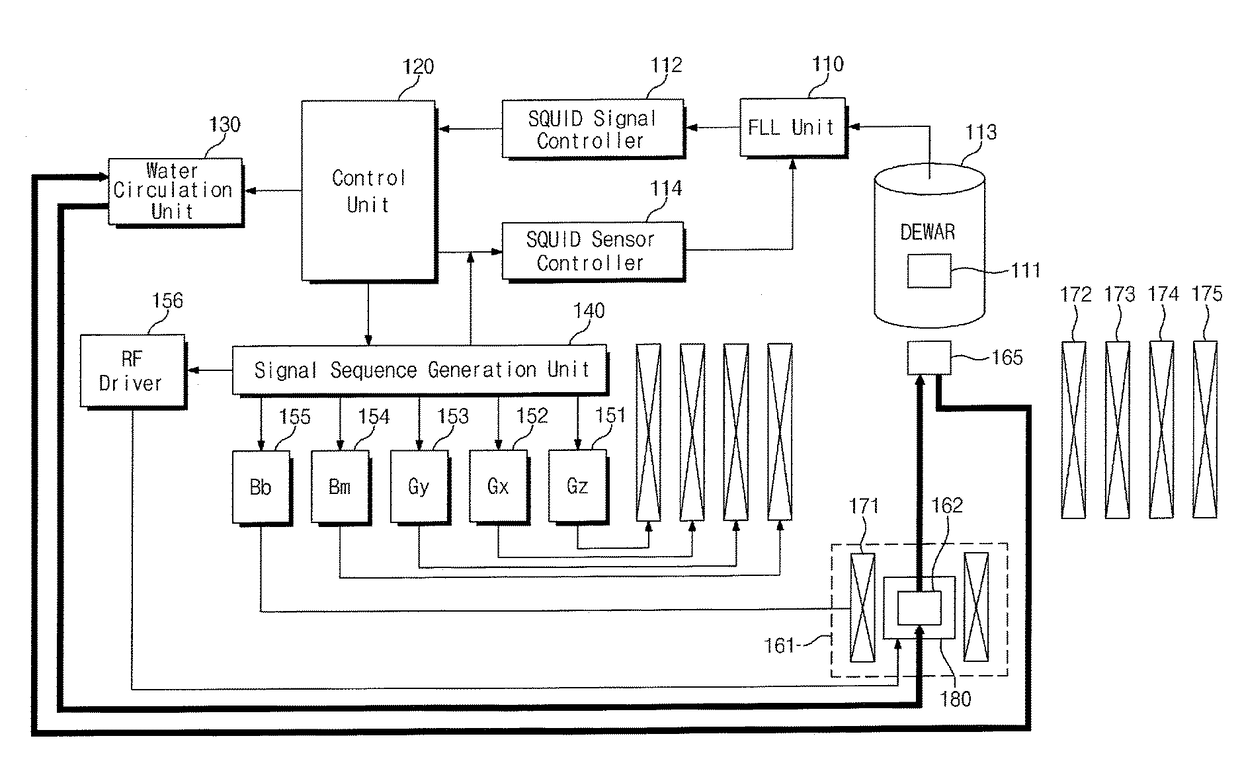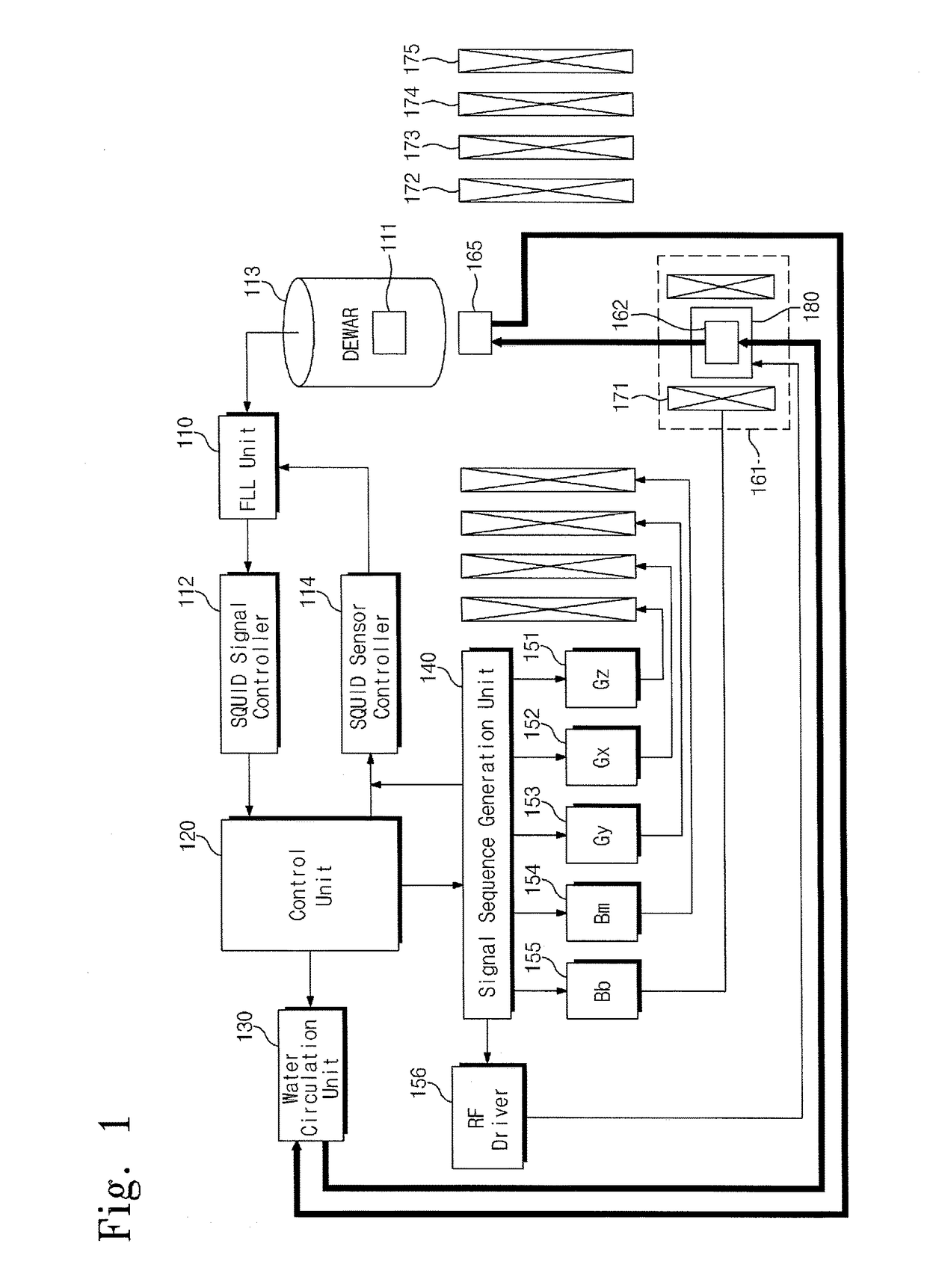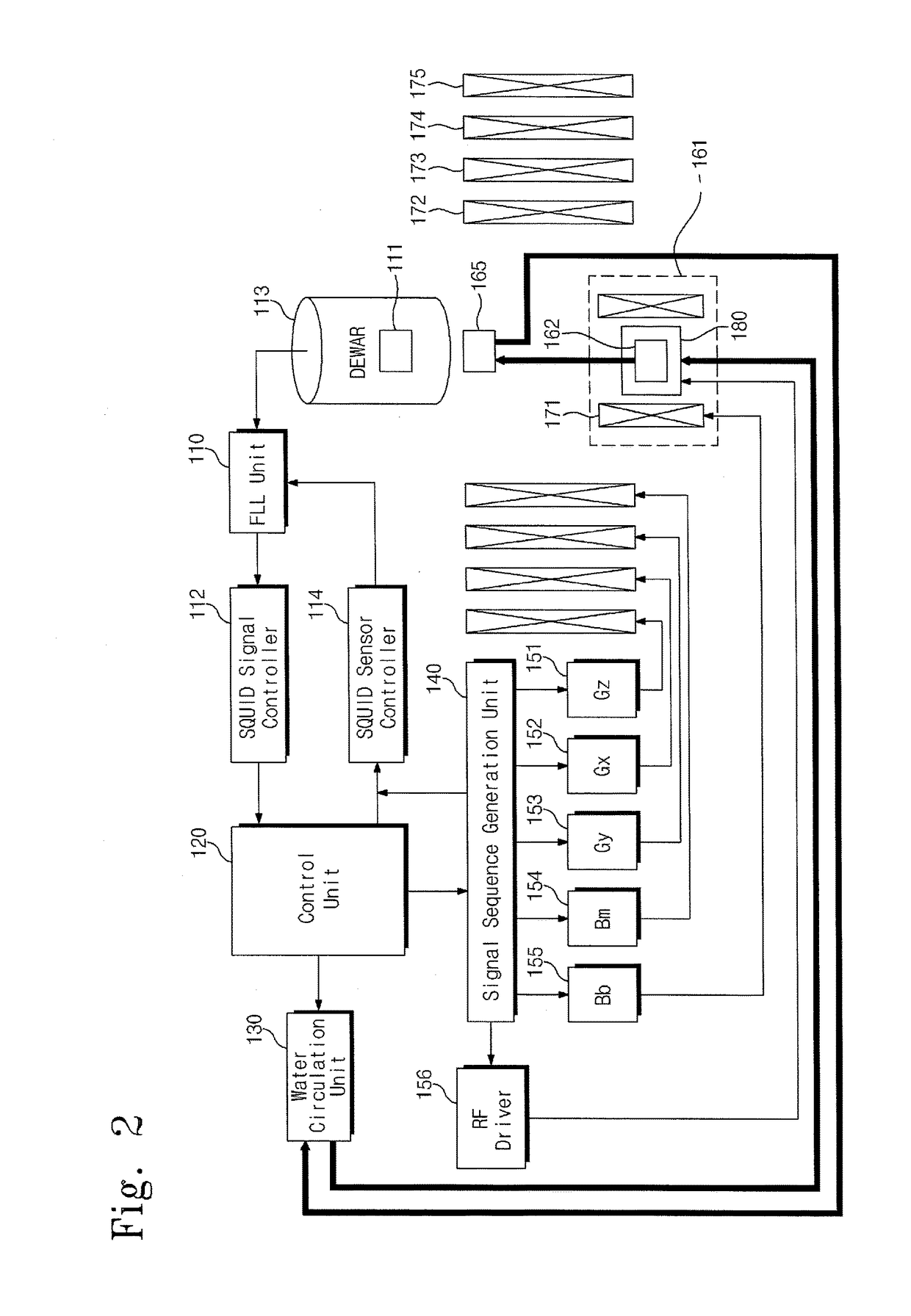Low-field nuclear magnetic resonance device and low-field nuclear magnetic resonance method
a nuclear magnetic resonance and low-field technology, applied in the field of nuclear magnetic resonance devices, can solve the problems of insufficient magnetic field to magnetize a nuclear spin, inability to use typical magnetic fields of several to tens of tesla, and high sensitivity of squid sensors
- Summary
- Abstract
- Description
- Claims
- Application Information
AI Technical Summary
Benefits of technology
Problems solved by technology
Method used
Image
Examples
Embodiment Construction
[0021]Dynamic nuclear polarization (DNP) based on the Overhauser double resonance effect is a result caused by cross relaxation from electron spin to nuclear spin. Accordingly, when an RF magnetic field for saturating the electron energy level is applied, a difference between nuclear spin level populations is raised to result in larger nuclear polarization.
[0022]A DNP-possible substance (hereinafter referred to as “DNP substance”) is a free-radical-containing substance. The DNP substance may include 4-amino-2,2,6,6-tetramethylpiperidine-1-oxyl (TEMPO) or 4-hydroxy-2,2,6,6-tetramethylpiperidine-1-oxyl (TEMPOL).
[0023]A DNP low-field nuclear resonance device according to an embodiment of the present invention includes a filter in which a DNP substance containing free radicals is disposed to make DNP possible. An RF magnetic field for saturating the electron energy level is applied around the filter to amplify the nuclear polarization of hydrogen atoms of water passing through the filte...
PUM
 Login to View More
Login to View More Abstract
Description
Claims
Application Information
 Login to View More
Login to View More - R&D
- Intellectual Property
- Life Sciences
- Materials
- Tech Scout
- Unparalleled Data Quality
- Higher Quality Content
- 60% Fewer Hallucinations
Browse by: Latest US Patents, China's latest patents, Technical Efficacy Thesaurus, Application Domain, Technology Topic, Popular Technical Reports.
© 2025 PatSnap. All rights reserved.Legal|Privacy policy|Modern Slavery Act Transparency Statement|Sitemap|About US| Contact US: help@patsnap.com



